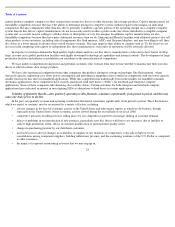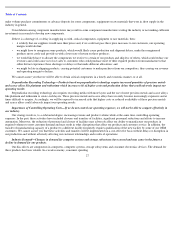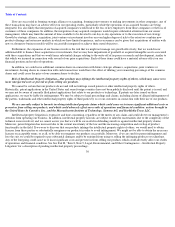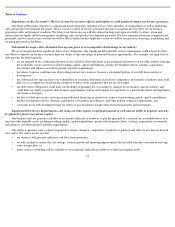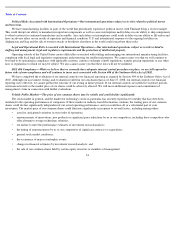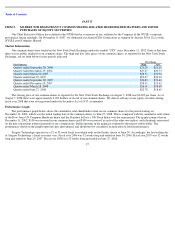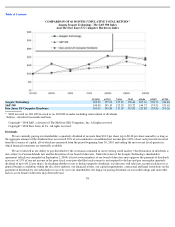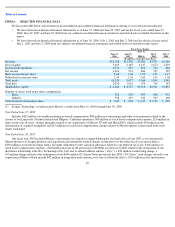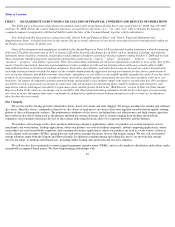Seagate 2007 Annual Report Download - page 33
Download and view the complete annual report
Please find page 33 of the 2007 Seagate annual report below. You can navigate through the pages in the report by either clicking on the pages listed below, or by using the keyword search tool below to find specific information within the annual report.
Table of Contents
If we cannot fund our liquidity needs, we will have to take actions such as reducing or delaying capital expenditures, product development
efforts, strategic acquisitions, investments and alliances, selling assets, restructuring or refinancing our debt, or seeking additional equity capital.
We cannot assure you that any of these remedies could, if necessary, be affected on commercially reasonable terms, or at all. In addition, our
existing debt instruments permit us to incur a significant amount of additional debt. If we incur additional debt above the levels now in effect, the
risks associated with our substantial leverage, including the risk that we will be unable to service our debt or generate enough cash flow to fund
our liquidity needs, could intensify.
Restrictions Imposed by Debt Covenants—Restrictions imposed by our existing credit facility may limit our ability to finance future
operations or capital needs or engage in other business activities that may be in our interest.
Our existing credit facility imposes, and the terms of any future debt may impose, operating and other restrictions on us. Our existing credit
facility may also limit, among other things, our ability to:
•
pay dividends or make distributions in respect of our shares;
•
redeem or repurchase shares;
•
make investments or other restricted payments;
•
sell assets;
•
issue or sell shares of restricted subsidiaries;
•
enter into transactions with affiliates;
•
create liens; and
These covenants are subject to a number of important qualifications and exceptions, including exceptions that permit us to make significant
dividends.
Our credit facility also requires us to maintain compliance with specified financial ratios. Our ability to comply with these ratios may be
affected by events beyond our control.
A breach of any of the covenants described above or our inability to comply with the required financial ratios could result in a default
under our credit facility. If a default occurs, the Administrative Agent of the credit facility may elect to declare all of our outstanding obligations
under the credit facility, together with accrued interest and other fees, to be immediately due and payable. If our outstanding indebtedness were
to be accelerated, we cannot assure you that our assets would be sufficient to repay in full that debt and any potential future indebtedness, which
would cause the market price of our common shares to decline significantly.
System Failures—System failures caused by events beyond our control could adversely affect computer equipment and electronic data
on which our operations depend.
•
effect a consolidation or merger.
Our operations are dependent upon our ability to protect our computer equipment and the electronic data stored in our databases from
damage by, among other things, earthquake, fire, natural disaster, power loss, telecommunications failures, unauthorized intrusion and other
catastrophic events. As our operations become more automated and increasingly interdependent, our exposure to the risks posed by these types
of events will increase. While we continue to improve our disaster recovery processes, system failures and other interruptions in our operations
could have a material adverse effect on our business, results of operations and financial condition.
32


